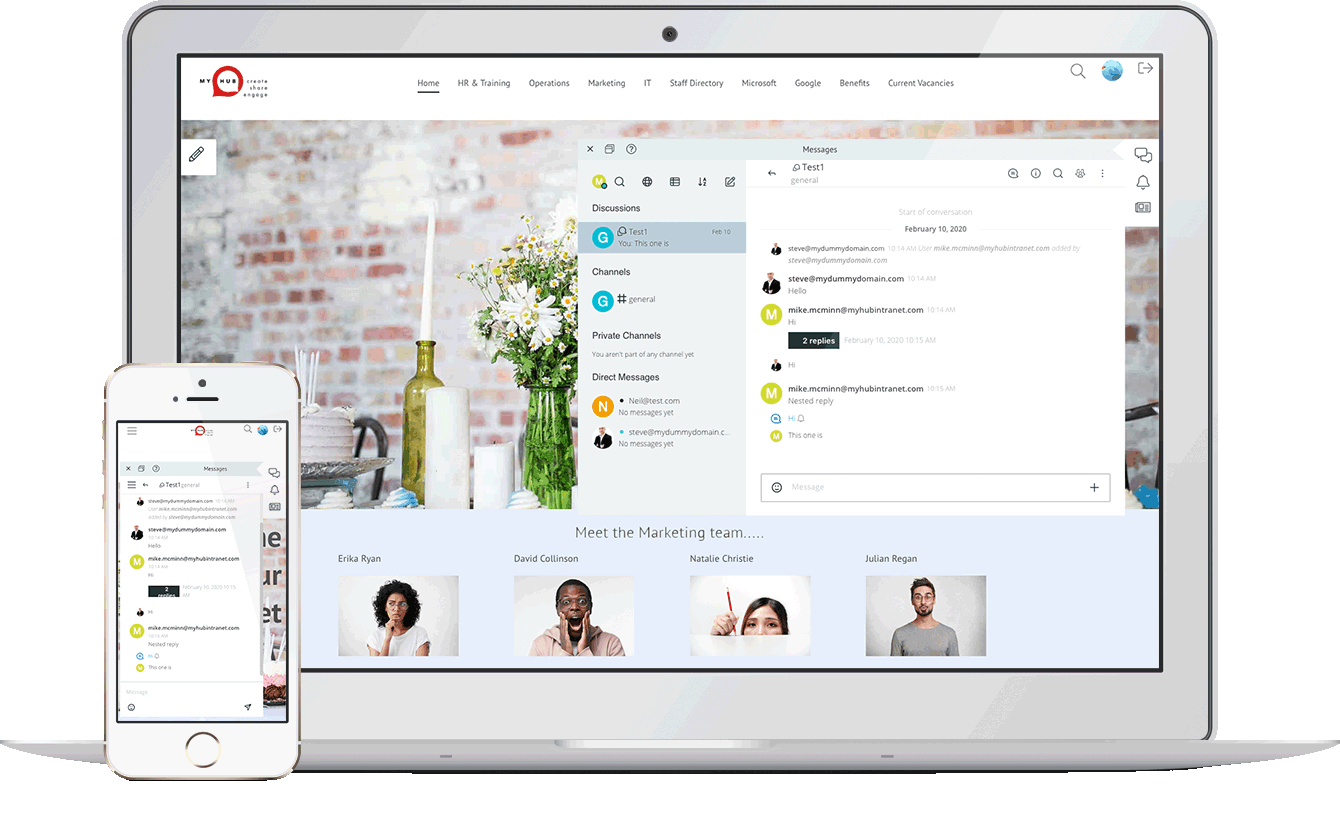Mastering Personal Project Management: Tools, Methods & Tips
Sticky notes, to-do lists, and checklists – whether you love or hate them, these tools are the backbone of many personal and professional projects. However, anyone who’s managed a large-scale initiative knows that effective project management takes much more than a few sticky reminders. It requires a blend of planning, strategy, and teamwork to drive results.
In both our work and home lives, successful personal project management depends on strong organizational skills, clear communication, time and budget control, and the right digital tools. Using the right project management software is essential to keep everything aligned and on track.
When you’re working with others, accountability and transparency are key. Team members should be able to quickly see the project status, next steps, and who’s responsible for what. Without this clarity, deadlines slip and progress stalls.
So whether you’re organizing a corporate event, relocating offices, managing a home renovation, or leading a cross-functional initiative, understanding how to manage projects effectively is essential. Here’s a guide to personal project management methodologies and how they can help you deliver success.
What Is Personal Project Management?
Personal project management refers to the way an individual organizes and executes their assigned tasks within a larger project. While project management typically focuses on coordinating team efforts toward shared goals, personal project management zeroes in on the specific actions, deadlines, and responsibilities of the individual contributor.
Many organizations adopt a formal project management methodology – or blend several – to guide their work. Below is an overview of some of the most widely used project management methods to help you decide which might suit your personal or team-based projects best.
Waterfall Method
The Waterfall project management method involves planning the entire project upfront and executing it in a sequential, phase-based manner. Each stage must be fully completed before moving on to the next, much like water cascading down steps.
This structured approach is ideal for projects with fixed requirements and clear deliverables. However, critics point out its rigidity and limited flexibility, which can be a drawback in fast-changing or unpredictable environments.
Lean Methodology
Lean project management focuses on maximizing value while minimizing waste. The method encourages continuous improvement, efficiency, and experimentation to deliver better results with fewer resources.
Lean is a favorite for teams aiming to streamline operations and cut costs. However, the intense planning and process optimization involved can be time-consuming, and even minor disruptions can cause significant delays.
Scrum Framework
Scrum promotes agility and speed by using small, cross-functional teams that work in short cycles called sprints. Each sprint typically lasts 2–4 weeks, with daily “scrum” meetings to track progress and address challenges.
This method empowers teams to deliver rapid, incremental results. However, its success often hinges on the experience and discipline of team members, as well as consistent collaboration.
Kanban Method
Kanban project management provides a flexible, visual approach to workflow. Tasks are displayed on a board – often digital – so that team members can see work in progress, upcoming items, and completed tasks at a glance.
Kanban is praised for its simplicity and adaptability. However, its open-ended structure can lead to a lack of urgency or deadline-driven momentum if not carefully managed.
PMI’s PMBOK Framework
The PMBOK (Project Management Body of Knowledge) isn’t a method but rather a standardized framework developed by the Project Management Institute (PMI). It outlines best practices, tools, and techniques that are considered industry benchmarks.
The PMBOK framework identifies five key phases: initiating, planning, executing, monitoring, and closing. Each phase includes specific guidelines to improve success and consistency across projects. PMBOK is widely respected and forms the foundation for many formal project management certifications.
Why A Modern Intranet Is The Ultimate Tool For Personal Project Management
Whatever your organization’s preferred project management methodology, today’s modern intranet platforms are equipped to streamline projects from start to finish. Whether you’re launching a new product, developing a marketing strategy, or implementing a new CRM system, a cloud-based intranet ensures your project stays on track and delivers optimal results.
Let’s explore how an intranet supports personal project management across all five phases defined in the PMBOK framework.
1. Initiating A Project
The intranet simplifies project initiation, even for distributed or remote teams. Kick things off by announcing new initiatives on the intranet’s company news feed or through a dedicated #project channel in the team chat. If you’re seeking collaborators, you can also invite employees to express interest or apply to join the project team.
For a more targeted approach, senior managers can use the intranet’s powerful employee directory to assemble a specialized team. With rich profiles that include skill sets, experience, and areas of expertise, it’s easy to identify the right people – whether you need marketing professionals, product developers, or tech experts.
Once your team is selected, create a dedicated project workspace on the intranet. With built-in access controls, only relevant team members will have entry. This space becomes the hub for collaboration – where team members can share insights, brainstorm ideas, and contribute relevant documents or research. It’s a flexible solution that works just as well for remote staff as for those at HQ.
Establish a #project chat using the intranet’s instant messaging feature. IM is ideal for fast updates, clarifications, or task coordination. A recent study found that 66% of users said IM led to faster issue resolution, and 75% reported fewer emails and phone calls – increasing overall productivity.
“75% of users say IM cuts down on call and email volume.”
Because the intranet is cloud-based, your project team enjoys anytime, anywhere access. This connectivity makes the intranet a critical component of today’s digital workplace – promoting real-time collaboration and streamlining workflows no matter where employees are located.
2. Planning A Project
Now that the groundwork is laid, it’s time to move into the project planning phase. This is where detailed plans are developed, including timelines, milestones, budgets, and task assignments. Clear planning ensures transparency and sets expectations from the outset.
Use your intranet to collaborate on the project plan. For example, create a shared Google Sheet and embed it directly into the intranet’s project workspace. Team members can edit and comment in real time, improving accuracy and eliminating version control issues.
Embedding documents in the intranet allows for rich contextual content and ensures everyone is working from the same version. Say goodbye to email chains and hello to centralized, up-to-date information – easily accessible in one organized location.
3. Executing A Project
The execution phase is where your plan becomes reality. Effective project execution requires constant tracking, accountability, and the flexibility to adjust as needed. When multiple contributors are involved, staying aligned is crucial.
The intranet provides tools to assign tasks and monitor progress. For example, using embedded Google Sheets, you can break down a complex initiative – such as hosting a virtual conference – into specific responsibilities like program development, speaker coordination, and attendee registration.
Additionally, automate your workflows to create personal to-do lists, set up checklists, and tag team members for reminders or updates. These features ensure that tasks are completed on time and that no detail falls through the cracks.
The intranet’s shared calendar function is another invaluable tool. Use it to track project deadlines, schedule meetings, and highlight milestone dates – helping everyone stay on top of their time management.
All these tools support seamless collaboration, whether your team is in-office or remote. Integration with Google Workspace or Office 365 enables real-time cloud collaboration. No matter where your team members are located, they’ll have instant access to the same data and communication tools as everyone else.
4. Controlling A Project
Effective project control is crucial to keeping your initiative on track. With a modern intranet platform, you can easily monitor project progress and ensure all team members are accountable for their individual tasks and responsibilities.
Team leaders can track performance metrics, identify bottlenecks, and reallocate resources in real-time. This level of transparency boosts accountability and ensures that every team member remains focused on their deliverables.
Moreover, robust internal communication is the backbone of successful project control. The intranet streamlines internal communications through real-time chat, team channels, project blogs, and collaborative workspaces. These tools ensure everyone is informed, empowered, and aligned with the project’s goals.
5. Closing A Project
The final stage of the project lifecycle is often overlooked, yet it’s just as critical as the earlier phases. A well-executed project closure confirms that all goals have been met, deliverables have been signed off, and the project is officially completed.
But closing a project is more than ticking boxes. It’s an opportunity for reflection and continuous improvement. The intranet enables you to run a comprehensive project evaluation using employee feedback surveys. These tools help gather insights on what worked well and what could be improved in future initiatives.
Use dedicated #channels or a knowledge-sharing blog to document and share best practices and lessons learned. This knowledge can be archived in your intranet’s knowledge management system for future reference, empowering other teams across the organization.
In addition, keep the wider workforce engaged by sharing project highlights. The social intranet allows you to post updates on the site activity wall and tag colleagues using @mentions to boost visibility. Promote final outcomes through the intranet’s news feed to ensure maximum exposure and recognition.
Why Intranet Is Ideal For Personal Project Management
Managing your own projects doesn’t need to be complicated. Thanks to its integrated features, the intranet simplifies personal project management by offering everything in one secure, centralized platform.
One of the biggest advantages? It’s all available with a single sign-on. No need to juggle multiple tools, switch between windows, or manage countless passwords. The intranet eliminates these frustrations, allowing users to focus on execution and outcomes.
Whether you’re working from the office, remotely, or in a hybrid setup, the intranet supports you every step of the way. With features like task tracking, shared calendars, file sharing, surveys, and instant communication, it’s the ultimate toolkit for personal productivity and project success.
Looking for powerful personal project management software? Discover how a modern intranet can enhance visibility, increase accountability, and drive results. Request a free demo or explore our 14-day free trial today.
FAQ Section
What is personal project management?
Personal project management involves planning, organizing, and managing tasks to achieve specific personal or professional goals efficiently.
Why should I use a project management methodology?
Utilizing a methodology provides structure and clarity, helping to streamline processes and improve the chances of project success.
Are there tools to assist with personal project management?
Yes, various tools like task managers, collaboration platforms, and scheduling apps can aid in organizing and tracking project progress.


